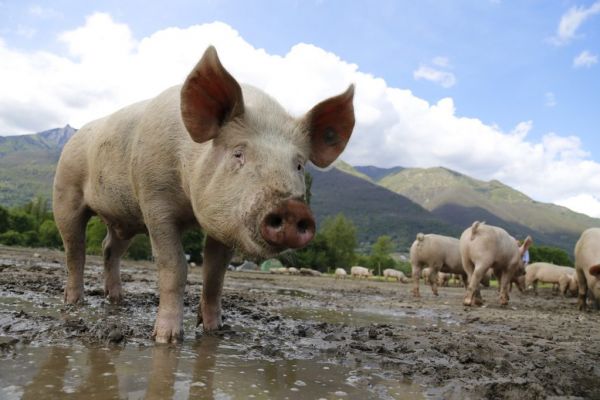China's huge pig herd is rebounding rapidly after being decimated by disease but pork output will take much longer to restore given the low quality of the new herd, say experts and analysts.
China's pork output fell to its lowest level in 16 years last year after African swine fever swept through farms nationwide from 2018 onwards.
With as many as 60% of its breeding sows gone by the second half of 2019, production of market pigs plunged and pork prices soared to new highs, where they have hovered for much of this year.
Urgent Rebuilding
But after Beijing called last September for an urgent rebuilding of pork supplies and producers have poured billions of yuan into new farms, triggering a rapid rebound.
In July, the herd grew for the first time in more than two years, and in August it jumped by 31% over the same month last year, said the Ministry of Agriculture and Rural Affairs.
Some producers have even suggested that the rebuild may be overdone.
But the large numbers mask a less productive herd. With such a severe shortage of breeding stock, many new farms are keeping back females that would normally have been slaughtered for meat to use as breeders.
Significantly Smaller Litters
Also known as 'three-way cross' females, their different genetics produce significantly smaller litters, say experts.
They now make up at least half of the breeding herd, from almost none earlier, estimated Stephen Wilson, chief executive of leading livestock genetics firm Genus plc.
"Even though numerically the sow herd is growing, it's growing in a low quality way," he said.
The sow herd grew for the first time in June, and surged 37% in August on a year ago, shows ministry data. But the increase is coming from a low base, said Pan Chenjun, senior analyst at Rabobank.
In August 2019, the herd was almost at its lowest level after heavy losses to African swine fever earlier in the year.
"If you take out the 50% of three-way cross females, it's really not that much," said Pan.
Small Litters, Less Fat
Three-way cross females typically have two pigs fewer per litter, or about five fewer a year based on around 2.4 litters over 12 months.
That can fluctuate depending on their care, said Fu Yan, professor of genetics at Zhejiang University.
Bred for their meat, the three-way cross pigs don't have as much fat as regular sows. That can be a problem if the sow needs to draw on fat reserves while producing milk for piglets.
"You need to pay more attention to their feeding," said Fu.
Pure Line Breeding Stock
Some will be replaced as soon as more efficient sows are available. Many companies are importing pure line breeding stock this year, which will produce more sows from next year. .
But for now stocks remain tight. Prices of regular sows are as much as 5,000 yuan ($734), compared with 1,800 yuan prior to African swine fever.
The sows that would usually be ready for slaughter are being held back and sold for a 500 yuan premium over other market pigs, indicating there is still demand for them in breeding farms, said Fu.
Boost In Supply
Pork supply is getting a boost as farmers raise pigs longer to heavier weights to profit from the high prices. With more heavy pigs going to slaughter ahead of this week's National Day holiday, prices are falling, said Pan.
However, extra meat on heavier pigs cannot fully compensate for the overall drop in productivity in the breeding herd.
"When you're making $400 a pig, efficiency is a secondary consideration, you just want animals," said Wilson.
"Over time, however, all of those [slaughter females] will need to be replaced," he said.
Even at the normal rate of replacing half the breeding herd each year, China will still need two or three years to return to optimal levels, said Fu.
Pan said she had recently revised her forecasts based on the rapid pace of expansion of new farms. But pork output will still need another three years before it is sufficient for the market.














